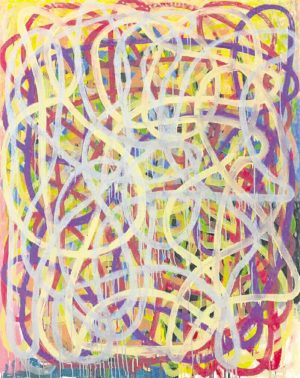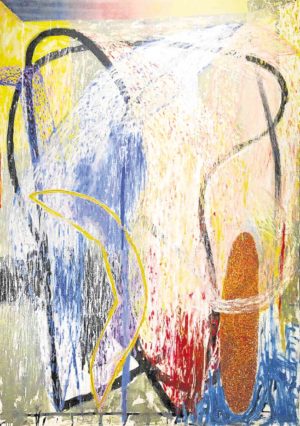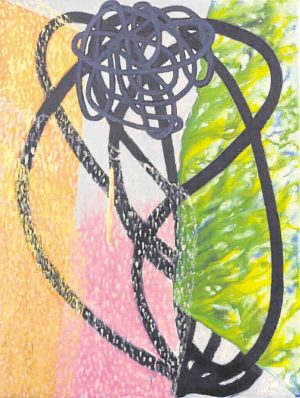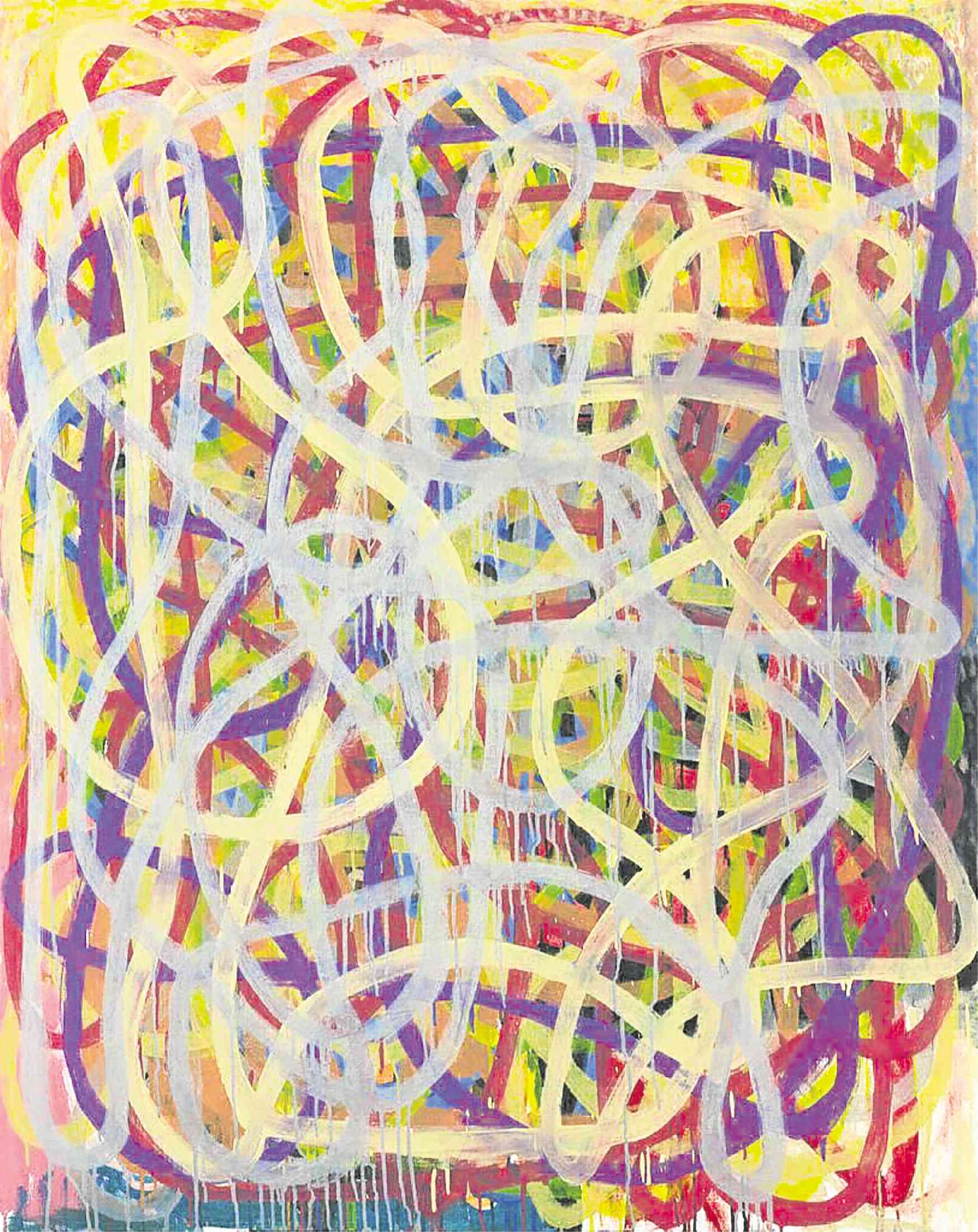
The exhibit “Homecoming: Works from Dumangas” is a welcome reacquaintance to the work of visual artist Rock Drilon.
One of the country’s consistent practitioners of abstract painting, Drilon is known for his expressionistic, playful compositions from personal, introspective exercises.
Opened last Sept. 9, the exhibit underscores continuities and turns in Drilon’s recent practice. It gathers 14 acrylic-on-canvas paintings, all produced in the artist’s home and studio in the rural seaside municipality of Dumangas. This series incorporates recurring elements from Drilon’s now familiar vocabulary of form—a preference for undulating looped forms, building clouds of pigment through small, choppy brushstrokes and the use of a predominantly pastel palette and metallic hues.
But they also point to nuanced departures and explorations from his existing body of works.
Drilon spent more than three decades living in Manila, and managed Mag:net Gallery from 2002. In late 2012, he moved back to Iloilo, putting up a studio in Dumangas.
The succeeding five years in Panay have seen Drilon engaged in various endeavors: from heading the Iloilo Cinematheque to organizing the 14th Visayas Island Visual Artists Exhibition and Conference (Viva ExCon) Iloilo in 2016. He has also held two solo shows of his work in Iloilo City, one at NOW Gallery and another last year at West Gallery.
Breathing anew
The first impression that may strike the visitor who sees the works for the first time is their sense of flowing form and luminous color: loops seamlessly merge with textured, shifting planes. These are compositions suffused with a sense of quiet harmony: bright and almost joyous, exhibiting a litheness of spirit.
Perhaps it’s this capacity to breathe anew that is made possible by distance. After the past weeks filled with stormy weather and beset by ominous political tempests online and offline, the visual encounter with such paintings may prove to be an unnerving, if not a possibly pleasant, surprise.

The reference to darkness is not entirely lost, though. Several paintings resemble Drilon’s earlier series of abstract loop drawings rendered in charcoal on paper and made over a period of several years. The odd one out in the room, for instance, is a work titled “Black Loops,” a composition built up by repeatedly painting tightly coiled lines as a continuum, until it obscures the entire surface of the canvas altogether, covering it entirely in various degrees of black.
Automatic painting
The loop has long remained both a visual and biographical marker for Drilon—not merely a decorative element or a stylistic quirk, but also a symbol and trace of continuity, moving on and beyond. Employing the loop as a form of automatic painting, in which he allows the line to carve its own path on paper or canvas, Drilon expresses impulses both subliminal and primordial.
Similar dark loops appear as complementary shapes in the rest of the paintings, often dissolving or diffusing with other formal elements. The closed form in “Black Loop,” for instance, now shares space with more brightly colored planes, lines and textures.
Standing in direct contrast to these works is Drilon’s other painting, “Silver Loop,” with multicolored undulating lines all wound up in each other, filling the entirety of the space like compressed confetti after a celebration.
Likewise, the cobalt blue loop—a strikingly familiar element and marker of identity across Drilon’s body of work— reappears in this series across several paintings.
The combined presence of dark and blue loops in these works connect Drilon’s past and present works.

Smaller quirks
Another aspect to Drilon’s abstract paintings is his tendency to title his works not after their most visually prominent forms but also after smaller visual quirks or surprises within the paintings. Examples: “White Line” and “Yellow Line,” titled after their thinnest slivers of pigment, which occur like accidental streaks or rogue elements.
“Red Line,” on the other hand, is devoid of red lines and instead draws attention to vibrant streaks of red, like blood bursting free in the periphery.
Lastly, another series of works within the show are titled not after formal elements such as lines or loops, but after actual things and objects. These also point to small departures or deviations within Drilon’s current practice. “Golden Cross,” for instance, incorporates and plays with this figurative symbol as an extension of abstract painting. “Window,” on the other hand, almost completely obscures all references to both dark and colorful forms—so prominent in the other works
—in its layering of gray planes, obscuring all in a haze.
The largest painting in the exhibit, a colossal canvas titled “Blue Arrow,” reminds one of the often forgotten potential and power of gestural abstraction: the act of painting writ large as performance and raw action.
Altogether, the works are a fitting homecoming gesture for the artist, showcasing enough of his visual vocabulary to situate one on familiar ground, but also offering a glimpse at new ground to cover. —CONTRIBUTED









































